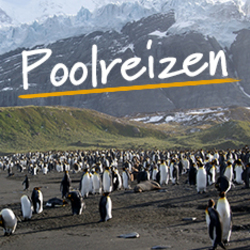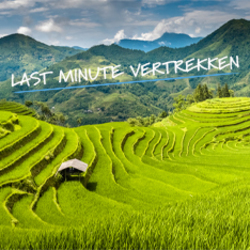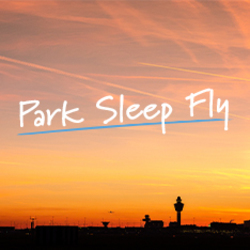Maak kans t/m 5 januari
BekijkActivities
- Culture
- Culture Bestsellers
- Natural Wonders
- Cultural Wonders
- — Discover the spectacular Garden Route, the greatest road trip in Africa — See iconic African wildlife, including elephants, lions, penguins and whales (in season) — Explore diverse nature from the forests of Tsitsikamma to the drylands of the Little Karoo — Experience culture from quaint communities to cosmopolitan Cape Town and nearby wineries — Walk through the ancient limestone Cango Caves
Food
-
1
Start Port Elizabeth; transfer to Sundays River Valley
Welcome to South Africa! Our tour begins in Port Elizabeth, colloquially known as PE, but officially Gqeberha, a Xhosa name for the river that runs through the city. We have a welcome briefing in the evening to discuss the adventures to come. If you have time before, however, you may want to spend the day exploring. Options include several beaches within walking distance, including Humewood Beach, plus city and township tours (payable locally). Accommodation: La Mer Guesthouse (or similar)
-
2
Game drives in Addo Elephant National Park
This morning, we head to Addo Elephant National Park, home to some 550 elephants (up from just 16 when the park was formed) plus black rhinos, leopards, lions, buffalos, hyenas, zebras, various antelopes and dung beetles. We enjoy a 45-minute game drive in our own vehicle, hoping to spot iconic African wildlife, and have the option of a second (at extra cost). Accommodation: La Mer Guesthouse (or similar)
-
3
Drive to Storms River; explore Tsitsikamma
Today, we head west to the official start of the Garden Route at Storms River in Tsitsikamma National Park. Stretching along the coast, the park, which comprises rocky coastlines, fairytale forests, waterfalls and rivers, gets its name from a local Khoekhoe language meaning ‘place of abundant water’. We can take a 1.2mi (2km) hike in the forest and along suspension bridges, which should take around an hour – other optional walks are also available. The area is a great place for bird enthusiasts with a variety of sea, forest and fynbos (scrubland) species present. Other resident animals include vervet monkeys, chacma baboons and clawless otters. Accommodation: Storms River Mouth Rest Camp chalets (or similar)
-
4
Free day to relax, walk or explore the region
We spend the day at Tsitsikamma, where several adventures await. Options include kayaking on the Storms River, zip-lining through the forest or swimming in the ocean. There are also several self-guided walks available, the easiest of which is the suspension walk. The most challenging is the Otter Trail, a well-marked four-hour trek with some small ladders and boulder hopping. This is the only walk that has rocky shoreline sections to it, plus it goes through the forest and passes the Strandloper Cave and ends at a waterfall dropping into the ocean – this trek is only recommended for fit walkers with a good sense of balance. Accommodation: Storms River Mouth Rest Camp chalets (or similar)
-
5
Morning visit Knysna Heads; afternoon to Oudtshoorn
We start our day with a visit to Knysna Heads, two tall sandstone cliffs that form a channel through which the turbulent Indian Ocean enters the calmer Knysna Lagoon. We have a bit more time to relax in town before leaving for Oudtshoorn after lunch. As we head inland and over a pass, the landscape changes drastically and we enter the Little Karoo, a much dryer, hotter region. Oudtshoorn itself became renowned for its trade in ostrich feathers and is still the ostrich capital of the world. Our guesthouse is out of town in De Rust, a tranquil, rural Karoo village. Accommodation: Housemartin Guest Lodge (or similar)
-
6
Visit Cango Caves and Meiringspoort Waterfall
We spend today discovering Oudtshoorn and the surrounding highlights. We start by visiting the Cango Caves, an extensive complex of caverns with stalactites and stalagmites. A local guide takes us on an hour’s journey through the limestone caves, which are millions of years old. We then enjoy lunch at Buffelsdrift, where we overlook a waterhole occasionally visited by elephants, giraffes and springboks. In the afternoon, we visit the beautiful Meiringspoort Waterfall and enjoy a 1,640ft (500m) walk along a well-maintained path, which takes about 30 minutes each way. The order in which we do these activities may be reversed. Accommodation: Housemartin Guest Lodge (or similar)
-
7
To Hermanus via Mossel Bay
Returning towards the coast, we stop at Mossel Bay and the Dias Museum Complex, which reveals the influence of early Portuguese sailors on South Africa. It’s also home to the Post Office Tree (a 500-year-old milkwood, where seafarers once left letters to be taken home by Portuguese sailors). We then continue to Hermanus, the whale capital of the world. It’s been a long travelling day, so we stretch our legs with a walk along the cliff path. Accommodation: Windsor Hotel (or similar)
-
8
Free day; whale watching in season
Today is a free day to relax and enjoy Hermanus. From June to November, southern right whales are easily spotted from shore as they frolic in Walker Bay. A whale crier sounds his kelp horn when he spots whales off the coast. Those who want can also do a boat-based whale-watching trip. There are also several other activities available from hikes to river cruises and lagoon kayaking, which are available year-round. You could also visit the Whale Museum to learn about the most famous visitors to these shores, or walk the 7mi (11km) cliff path, where you could see indigenous plants, tortoises and mongoose. Accommodation: Windsor Hotel (or similar)
-
9
To Stellenbosch; afternoon wine tour and on to Cape Town
Our next destination is the much-celebrated wine region of South Africa. The industry here, which dates to the 17th century and was heavily influenced by French Huguenots, produces some of the best wines in the world. We have free time to explore the oak-lined streets of Stellenbosch on foot and eat at one of the many restaurants in town. In the afternoon, we enjoy a cellar tour with a sommelier at one of the nearby vineyards. Of course, we also taste a selection of their wines before continuing our journey to Cape Town, the Mother City. Accommodation: City Lodge Hotel Victoria & Alfred Waterfront (or similar)
-
10
Two days exploring Cape Town, Table Mountain, the Cape Peninsula and Simon's Town penguins
We spend the next two days in and around Cape Town, the most exciting city in South Africa. Our activities in Cape Town will, to some extent, be dictated by the weather as visits to the top of Table Mountain, which has its own micro-climate, are determined by cloud cover and wind. Because of this often-temperamental weather, it is best not to prebook the cable car but to buy tickets on the spot (not included). Those staying in Cape Town post-tour may opt to visit Table Mountain later if the weather looks as though it may improve. There is also the option of visiting Robben Island on one of the days; however, we recommend you prebook Robben Island with us before the trip (but pay the tour leader locally). On one of the days, we head down the Cape Peninsula. We follow the Atlantic Seaboard past the areas of Camps Bay, Llandudno and Hout Bay to the Cape Point via Chapman’s Peak drive, if it is open. The highlight is our visit to the Cape of Good Hope Nature Reserve, home to elands, bonteboks, springboks, wildebeest, baboons and ostriches. Rugged cliffs, unspoiled beaches, shipwrecks and beautiful flora are the main features of the reserve. We walk through the reserve for approximately two hours. We first head to the new lighthouse for the panoramic views, before following the pathway to the old lighthouse, which offers spectacular cliff views. Once we leave the park, we stop at the former Royal Navy base at Simon’s Town and visit the resident penguin colony at Boulders Beach. Accommodation: City Lodge Hotel Victoria & Alfred Waterfront (or similar)
-
12
End Cape Town
On our final day, we have the option of doing a township tour, strolling along the Victoria and Alfred Waterfront or exploring various other parts of Cape Town.














































